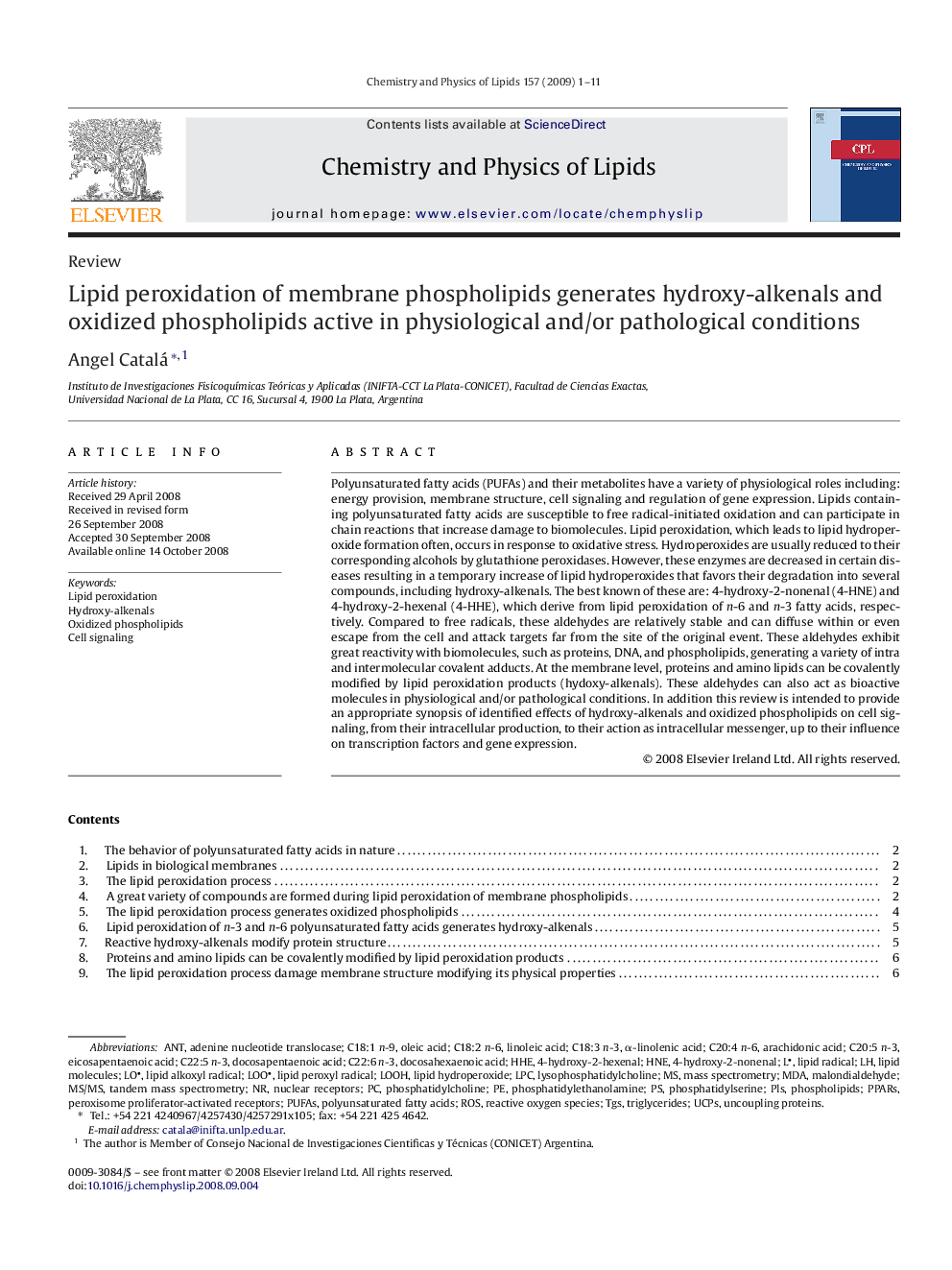| Article ID | Journal | Published Year | Pages | File Type |
|---|---|---|---|---|
| 1252459 | Chemistry and Physics of Lipids | 2009 | 11 Pages |
Polyunsaturated fatty acids (PUFAs) and their metabolites have a variety of physiological roles including: energy provision, membrane structure, cell signaling and regulation of gene expression. Lipids containing polyunsaturated fatty acids are susceptible to free radical-initiated oxidation and can participate in chain reactions that increase damage to biomolecules. Lipid peroxidation, which leads to lipid hydroperoxide formation often, occurs in response to oxidative stress. Hydroperoxides are usually reduced to their corresponding alcohols by glutathione peroxidases. However, these enzymes are decreased in certain diseases resulting in a temporary increase of lipid hydroperoxides that favors their degradation into several compounds, including hydroxy-alkenals. The best known of these are: 4-hydroxy-2-nonenal (4-HNE) and 4-hydroxy-2-hexenal (4-HHE), which derive from lipid peroxidation of n-6 and n-3 fatty acids, respectively. Compared to free radicals, these aldehydes are relatively stable and can diffuse within or even escape from the cell and attack targets far from the site of the original event. These aldehydes exhibit great reactivity with biomolecules, such as proteins, DNA, and phospholipids, generating a variety of intra and intermolecular covalent adducts. At the membrane level, proteins and amino lipids can be covalently modified by lipid peroxidation products (hydoxy-alkenals). These aldehydes can also act as bioactive molecules in physiological and/or pathological conditions. In addition this review is intended to provide an appropriate synopsis of identified effects of hydroxy-alkenals and oxidized phospholipids on cell signaling, from their intracellular production, to their action as intracellular messenger, up to their influence on transcription factors and gene expression.
